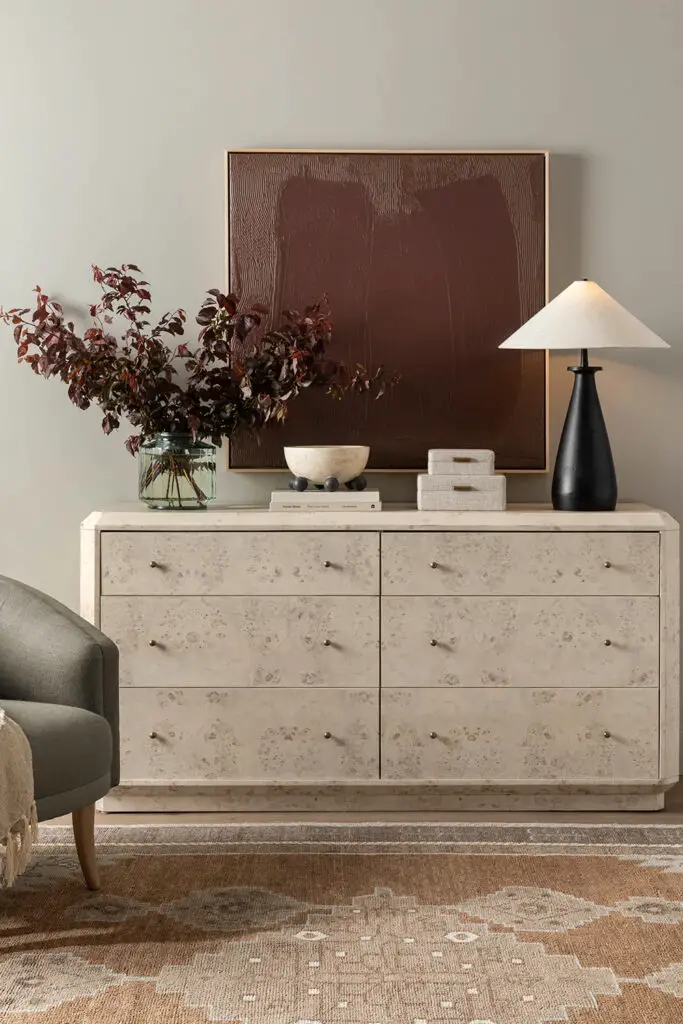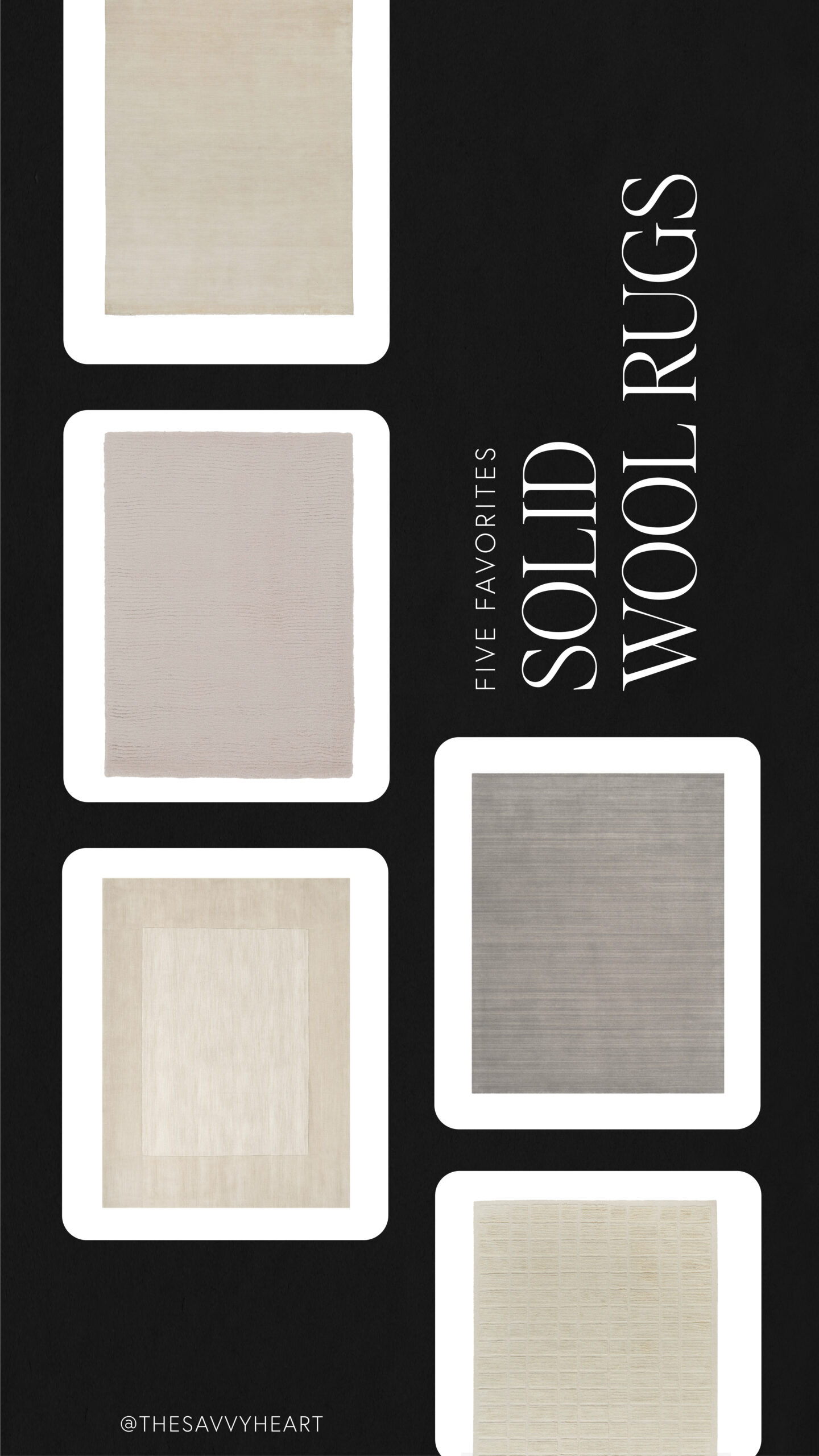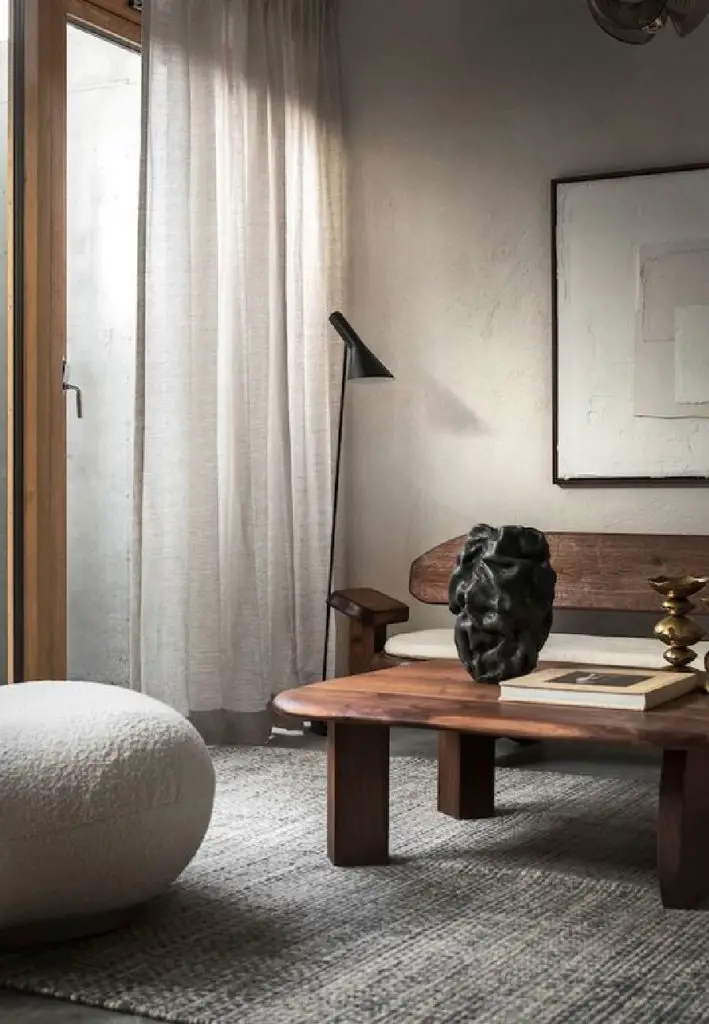12 Pros & Cons Of Natural Wool Area Rugs
If you’re shopping online for a natural wool rug, chances are you might have some questions before you decide to make the investment. Most of my clients want to know what the durability is, how easy they are to clean, and if they’re really worth the cost. If you’re wondering the same things about these natural wool rugs, I’m covering all of that and more in this post!
I’m going over 12 pros and cons of wool rugs, so you know exactly what you’re buying to make sure this type of rug is a good fit for you and your lifestyle. No more shopping online and hoping for the best. Let’s pull back the curtain and look at the good and bad that comes with a wool rug.


Pros of Natural Wool Rugs
1. Natural & Healthy Choice
Wool is made from sheep’s wool, which is 100% natural. This means it won’t give off harmful emissions, unlike some other rugs on the market that are made of plastic and synthetic fibers. Wool rugs are also a healthy choice as it doesn’t encourage bacteria or dust mites, making it suitable for households with children or pets.
2. Sustainable
Wool is not only renewable but it is also easy to break down and reuse. If you ever want to part with your wool rug, you won’t contribute to landfills. The wool fibers biodegrade in the soil, producing nutrients that benefit plants.
3. Durable
Wool is known for being extremely durable. It bounces back quickly, keeping the carpet free from marks and flattened spots, especially in high-traffic areas of your home. This durability is why wool carpets can maintain their appearance for many years, often lasting decades if cared for properly.
4. Resistant to Dirt
Wool is a natural fiber with its own oils that fight dirt and repel oil-based stains. Because wool is quite dense, dirt won’t show easily. However, like any rug, you need to vacuum regularly to keep it in tip-top shape.
5. Provides Warmth
Wool rugs are comfortable and warm, and they also insulate your home, making them a great choice for cold winters. This is great news if your floors run on the cooler side, especially if you have tile floors. Wool also absorbs sound, reducing echoes and noise in your home, which is a great addition to a large, open space.
6. Fire Resistant
Wool rugs are naturally fire-resistant. Not to be confused with fire retardant, which means that it has been chemically treated to self-extinguish. I could go on and on about how dangerous the chemicals are that make items fire retardant, but I’ll just say that they are typically the worst type of chemicals to bring into your home. With that being said, wool can catch fire when exposed to an open flame, although it does so very slowly and is self-extinguishing.
Wool fibers ignite at a very high temperature, and with the presence of natural oils in the wool, this material can actually help smother and extinguish flames, preventing them from spreading rapidly.
7. Hypoallergenic
Wool possesses hypoallergenic qualities, making it unlikely to cause allergic reactions. This can be attributed to the microscopic pockets present within wool fibers, although they remain unseen to the naked eye. These pockets trap dust, fungal spores, and pollen that are present in the air.
Cons of Natural Wool Rugs
1. Shedding & Maintenance
Shedding is a common issue, especially with brand new wool rugs. While this is generally just temporary, it can be annoying, especially if you aren’t expecting it. Wool rugs will require regular care, including vacuuming and occasional professional cleaning. This might not be an issue for you, especially if you already have pets, but considering wool rugs are extremely heavy, if you have to physically take them to the cleaners, you’ll have quite a workout ahead of yourself.
2. Stain Resistance
While wool is naturally resistant to dirt and oil-based spills, it can be susceptible to staining from non-oil-based liquids, particularly those like red wine or coffee. These substances can adhere to wool fibers, making their removal challenging and sometimes even impossible. To ensure the longevity of your wool rug, it’s essential to clean up any spills as soon as possible, especially those with strong colors.
3. Water Absorbency
Let’s continue on the topic of cleaning and maintenance. Wool carpets have strong moisture-absorbing properties, which can be beneficial if you live in a humid climate. However, this can be a drawback in situations involving spills or consistent exposure to water, such as in a bathroom setting- which should be avoided. Excessive water can saturate the wool fibers, potentially leading to mildew, discoloration, and unpleasant odors.
4. Price Point
Wool rugs tend to be more expensive than rugs made from synthetic materials, which can be a significant consideration if you’re on a budget. With that being said, you must realize that these rugs can significantly outlast a synesthetic rug- many of them lasting decades if taken care of properly.
5. Fading
Over time, wool rugs may experience fading, especially when exposed to prolonged sunlight, which can affect the rug’s colors and appearance. Keep this in mind if you’re looking to purchase a strongly pigmented rug, and think about the area you’re putting it in.

Five Favorite Solid Wool Rugs
1. Heritage Rug via Lulu & Georgia
2. Brockton Solid Tan Wool Rug via Boutique Rugs (more colors available)
3. Reims Solid Border Wool Rug via Walmart (more colors available)
4 Himalaya Area Rug via Walmart (more colors available)
5 Geller Rug via Lulu & Georgia
There you have it, twelve pros and cons of wool rugs. I hope I was able to provide some valuable insight into wool rugs and if they’re a good fit for you and your family. If you have any more questions about wool rugs, please let me know in the comments and I’d love to help!
Until next time,
Cheers!


